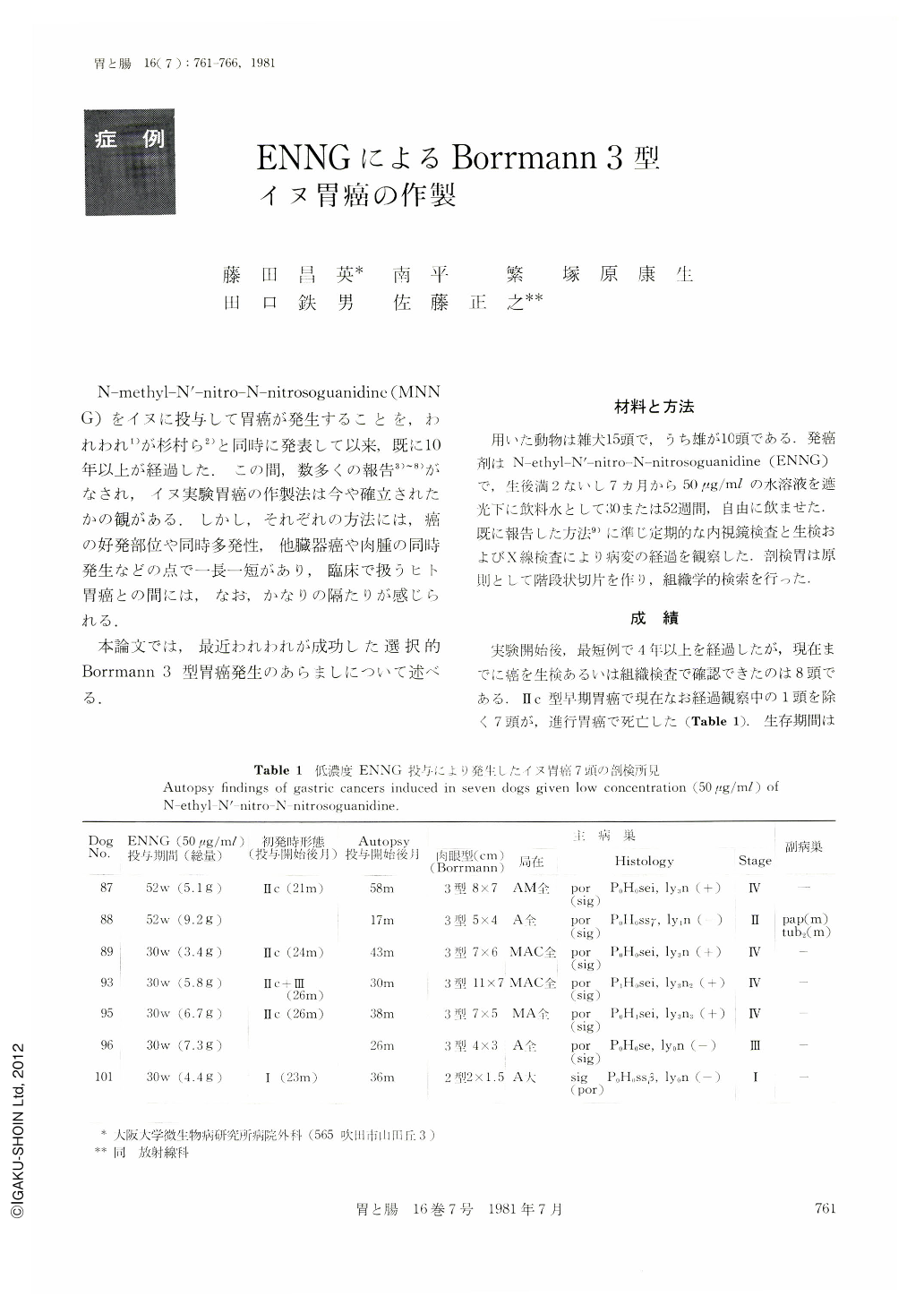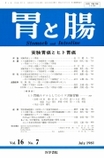Japanese
English
- 有料閲覧
- Abstract 文献概要
- 1ページ目 Look Inside
N-methyl-N'-nitro-N-nitrosoguanidine(MNNG)をイヌに投与して胃癌が発生することを,われわれ1)が杉村ら2)と同時に発表して以来,既に10年以上が経過した.この間,数多くの報告3)~8)がなされ,イヌ実験胃癌の作製法は今や確立されたかの観がある.しかし,それぞれの方法には,癌の好発部位や同時多発性,他臓器癌や肉腫の同時発生などの点で一長一短があり,臨床で扱うヒト胃癌との問には,なお,かなりの隔たりが感じられる.
本論文では,最近われわれが成功した選択的Borrmann3型胃癌発生のあらましについて述べる.
Giving a low concentration of ENNG (50μg/ml) to 15 dogs for 30 to 52 weeks, we performed endoscopic and radiographic observations of the experimental tumor growth as well as histological evaluation of the autopsy stomach.
Gastric carcinoma developed in eight dogs and seven of them died of advanced gastric cancer within five years after starting the experiment.
Among them, one dog showed superficial cancer at the body of the stomach but the rest of them all showed a single gastric cancer from angle to pylorus. The majority of the cases showed Ⅱc type early gastric cancer at the early stage.
However, the autopsy disclosed Borrmann's type 3 advanced cancer in six dogs showing deep irregular ulcer, diffuse thickening and sclerosis around the ulcer edge. The Borrmann's type 3 cancer in six dogs was quite similar to the pathohistological feature of the human's one. Namely, its spread in the mucosal layer was limited and signet ring cell cancer was noted only in a small area around the deep ulcer, however below the submucosal layer, there was diffuse infiltration with marked fibrosis and it widely invaded down to the serosa showing poorly differentiated adenocarcinoma.
Invasion to the other organ such as pancreas and other vascular invasion were also noted in many cases and lymph nodes metastases were found in four dogs. Our method of producing gastric cancer in dog did no make cancer in the other organ or produce sarcoma which were commonly resulted from the conventional method, and also produced a single cancer.
Furthermore, our experimental gastric cancer showed advancement from Ⅱc type early gastric cancer to Barrmann's type 3 cancer which is quite similar to the human gastric carcinoma, therefore we feel that our model will contribute great deal in the cancer research from now on.

Copyright © 1981, Igaku-Shoin Ltd. All rights reserved.


